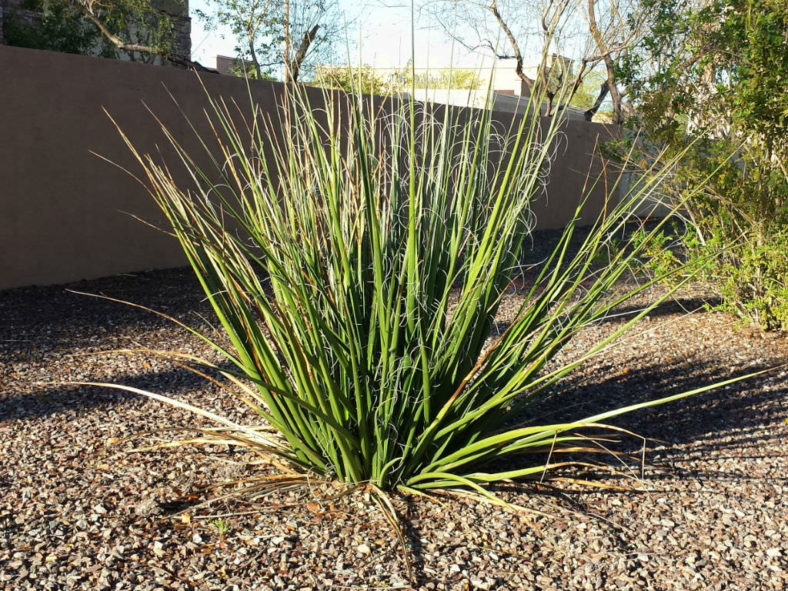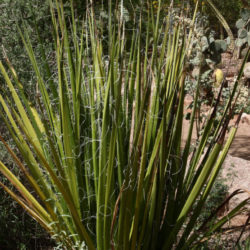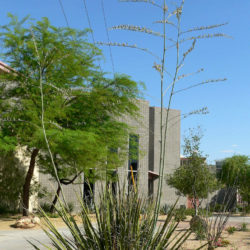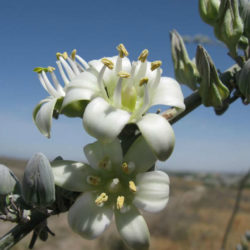Scientific Name
Hesperaloe funifera (K.Koch) Trel.
Common Name(s)
Coahuilan Hesperaloe, Giant Hesperaloe, Giant Yucca, Mexican False Yucca, New Mexico False Yucca, Samandoque
Synonym(s)
Agave funifera, Hesperaloe funifera subsp. funifera, Yucca funifera
Scientific Classification
Family: Asparagaceae
Subfamily: Agavoideae
Genus: Hesperaloe
Description
Hesperaloe funifera is an ornamental succulent that forms a basal clump of separate but closely-spaced rosettes of yellowish-green, sword-like leaves with coarse threads on the margins. The older rosettes are found at the center of the clump. The narrow leaves can grow up to 6.6 feet (2 m) long and 2 inches (5 cm) wide.
In late spring and summer, the mature rosettes send up erect, up to 12 inches (30 cm) tall, open flower stalks holding numerous white, bell-shaped flowers. Fruits are green, aging to brown capsules.
Origin
Hesperaloe funifera is native to the United States (Texas) and Mexico (Coahuila, Nuevo León, and San Luis Potosí). It occurs on rocky slopes and open plains in arid and semiarid regions from 1,640 to 6,890 feet (500 to 2,100 m) above sea level.

Hardiness
USDA hardiness zone 7a to 10b: from 0 °F (−17.8 °C) to 40 °F (+4.4 °C).
How to Grow and Care
Plant Red Yucca in full sun in well-drained soil, preferably a bit sandy. To establish a deep and extensive root system, follow a regular watering schedule during its first growing season. Feed with a general-purpose fertilizer in the spring before the new growth starts. Although established plants can get by on little water, for better-looking blooms, give them a deep soaking about once every two weeks during the heat of the summer.
Sometimes xeriscape gardeners avoid cacti and Yuccas, thinking of them as cliches. Still, the striking blooms and unusual foliage of the Red Yucca have won over xeriscape enthusiasts from California to Texas to Florida. The desert native is also at home in a rock garden, planted among dry streambeds and landscape boulders. A surprising addition to a cottage garden or border can contribute color and textural interest if placed with other water-wise perennials.
Links
- Back to genus Hesperaloe
- Succupedia: Browse succulents by Scientific Name, Common Name, Genus, Family, USDA Hardiness Zone, Origin, or cacti by Genus
Photo Gallery
Click on a photo to see a larger version.


